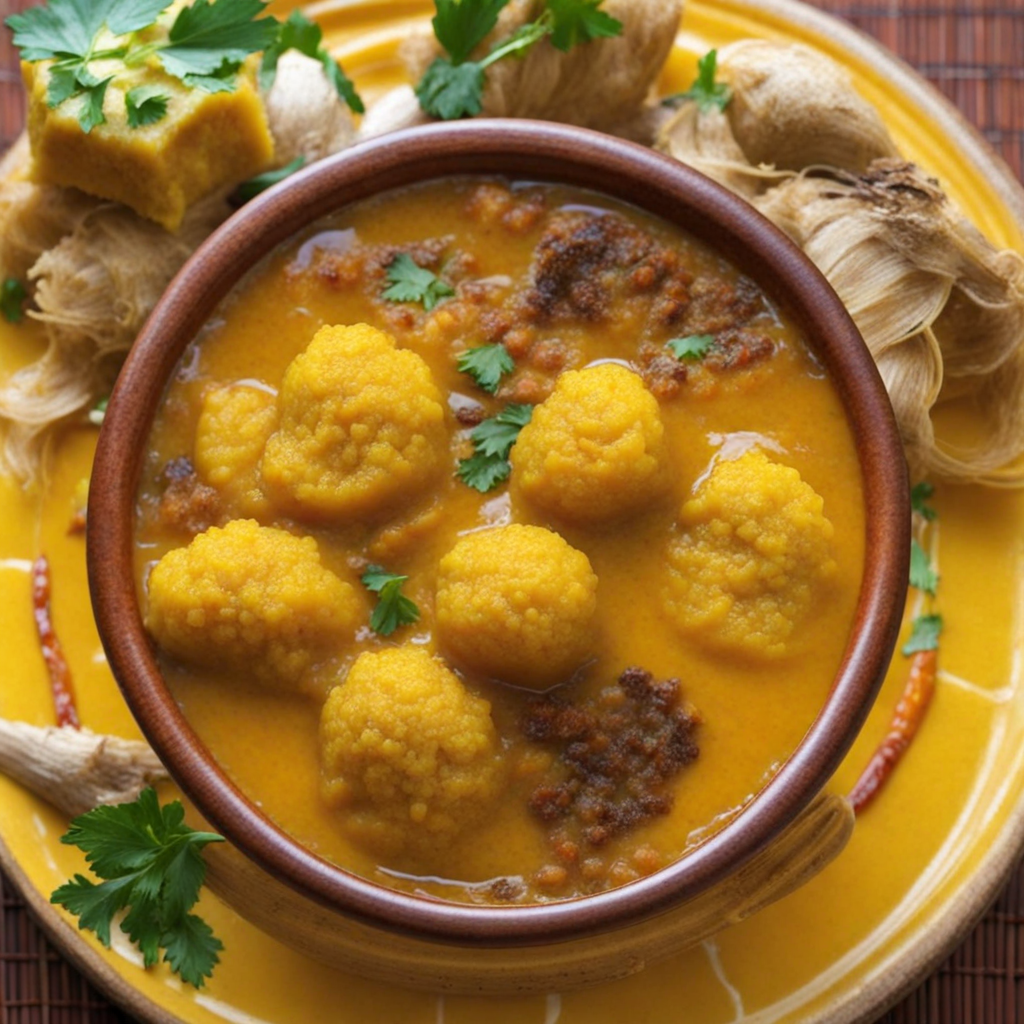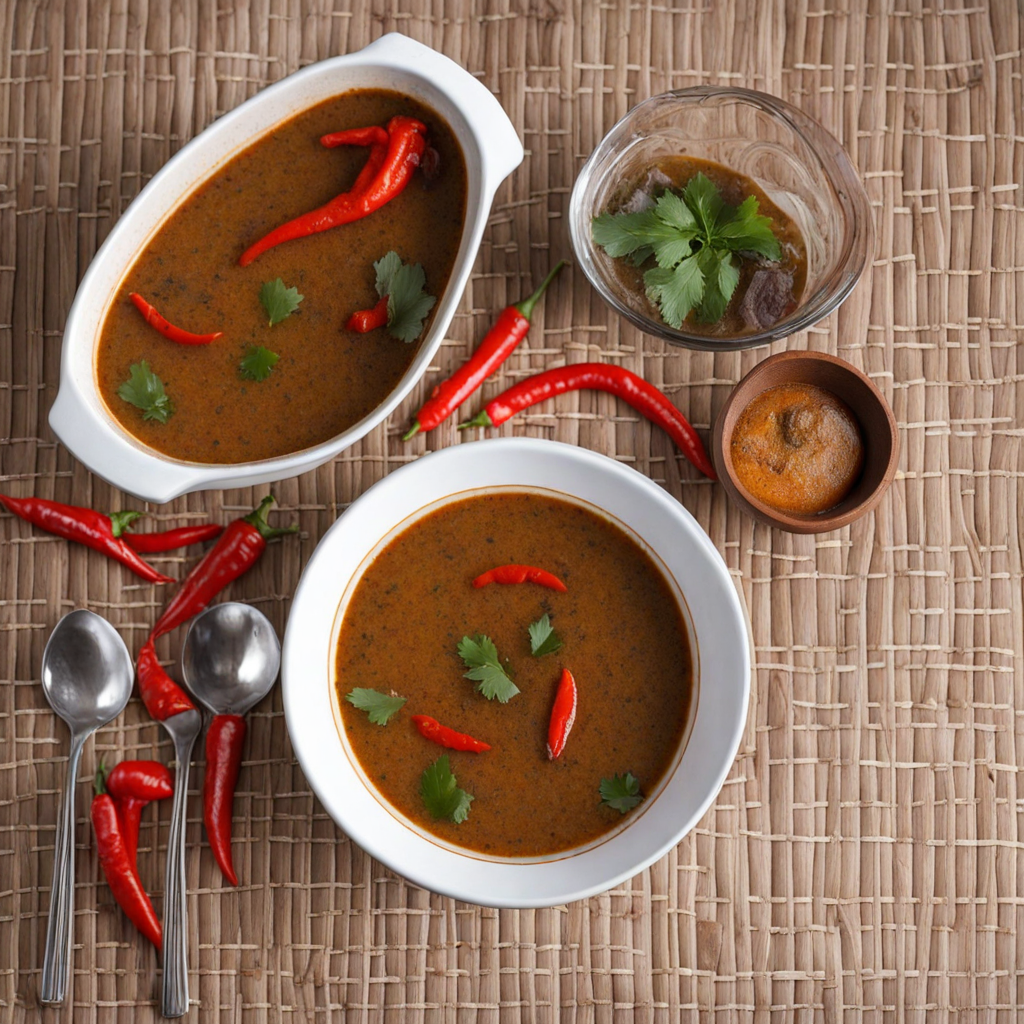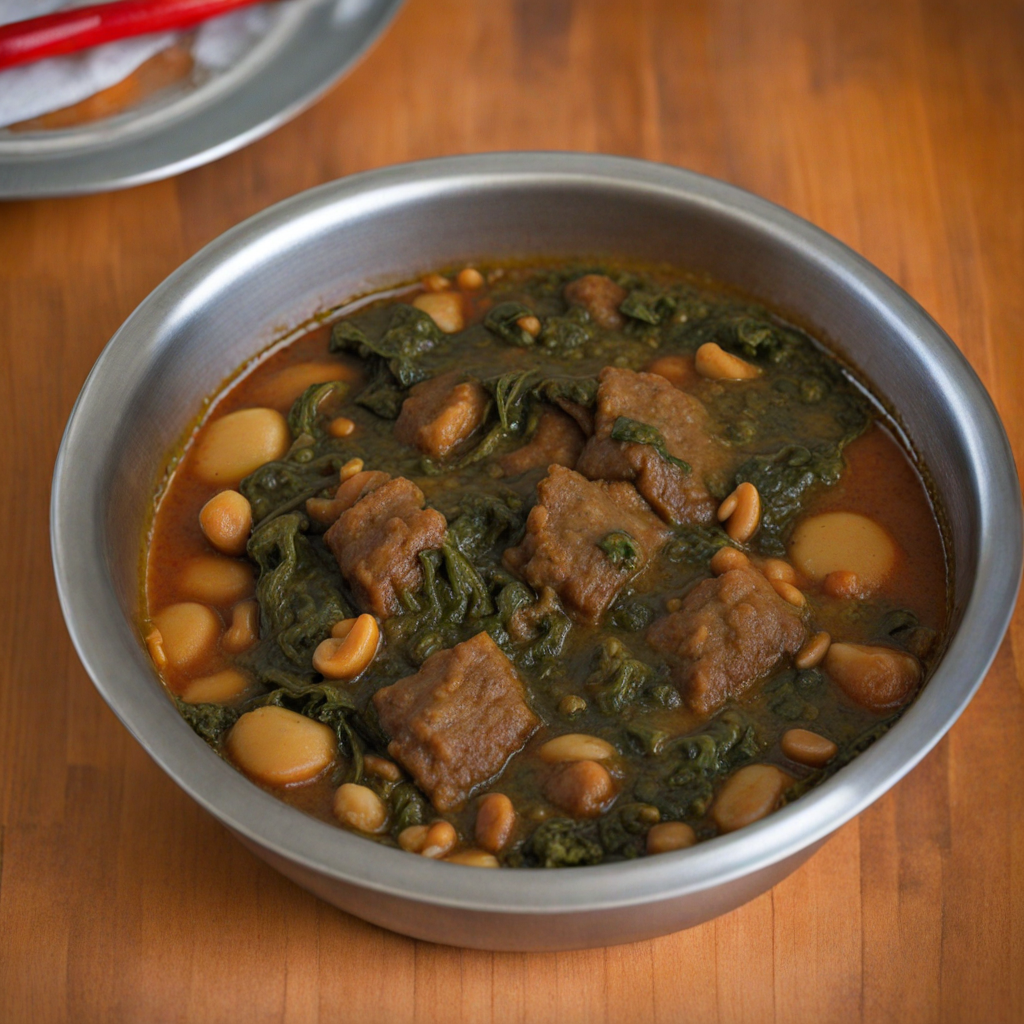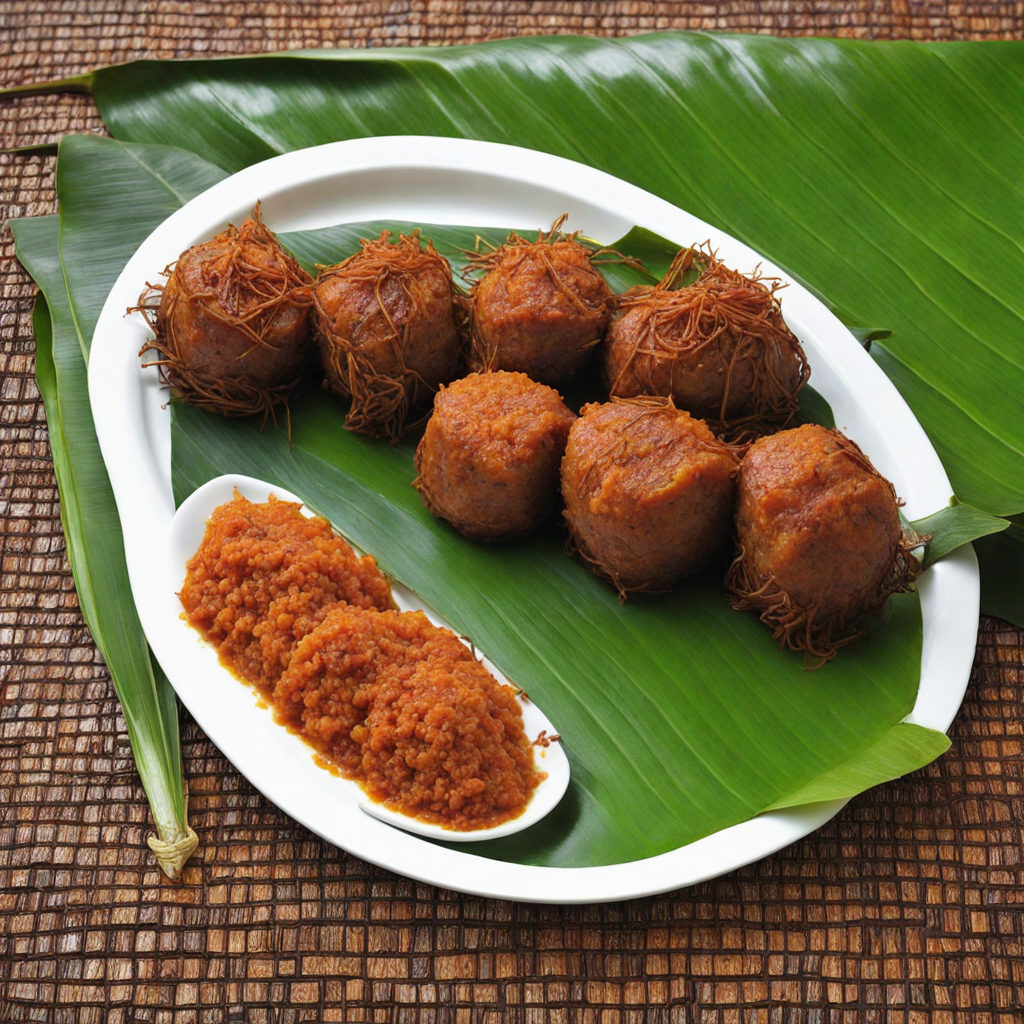Achu Soup
Achu Soup, a traditional dish from Cameroon, particularly the English-speaking regions, is a delightful culinary experience that showcases the rich flavors and cultural heritage of the country. The soup is typically made with a base of fermented and mashed cocoyam, which gives it a unique, earthy flavor and a smooth, creamy texture. This distinct ingredient is combined with a variety of spices and local herbs, resulting in a comforting dish that warms the soul. The vibrant yellow color of the soup, often enhanced by the use of palm oil, makes it visually appealing and inviting. One of the standout features of Achu Soup is its versatility. It can be enjoyed with a variety of proteins, often accompanied by meat or fish, which adds depth and richness to the dish. The combination of spices—such as ground crayfish, pepper, and other seasonings—creates a harmonious balance of heat and flavor, ensuring that each spoonful is packed with a taste explosion. The soup is typically served with a side of fufu or plantains, making for a hearty meal that is both satisfying and nourishing. For those seeking to explore new flavors, Achu Soup is a remarkable choice. Its combination of local ingredients and traditional preparation methods allows food lovers to immerse themselves in Cameroonian culture while enjoying a dish that is both unique and comforting. Whether shared with family during celebrations or enjoyed as a simple meal at home, Achu Soup offers a taste of Cameroon's culinary richness that is sure to leave a lasting impression.
How It Became This Dish
The Rich History of Achu Soup: A Culinary Gem from Cameroon Achu Soup, also known as "Achu" or "Achu and its Soup," is a traditional dish from the Western Highlands of Cameroon, particularly celebrated among the Beti, Bantu, and other ethnic communities. This unique soup has a rich cultural heritage and is often regarded as a symbol of identity, community, and tradition. Its origins, cultural significance, and evolution over time weave together a story that reflects the broader narrative of Cameroonian history and culinary practices. #### Origins The origins of Achu Soup can be traced back to the indigenous peoples of the Western Region of Cameroon. The Beti people, known for their rich agricultural practices, were among the first to cultivate the ingredients that form the base of Achu. The primary component of this soup is the achu (or yellow cassava), a variety of cassava that is known for its distinctive yellow color, imparted by the presence of carotenoids. This tuber is often pounded into a smooth, stretchy paste, which serves as the foundation of the dish. The preparation of Achu Soup itself involves a variety of ingredients, including palm oil, meat (commonly beef or fish), and spices such as ground crayfish and pepper. The combination of these elements creates a hearty and flavorful broth that can vary in taste based on regional preferences and available resources. Over time, the dish has evolved, with different communities adding their own twists and flavors, contributing to the rich tapestry of Cameroonian cuisine. #### Cultural Significance Achu Soup holds a significant place in Cameroonian culture. It is more than just a meal; it is an emblem of social cohesion and a means of expressing cultural identity. Traditionally, families and communities gather to prepare and share Achu, especially during important ceremonies such as weddings, funerals, and festivals. The act of cooking and sharing this dish fosters a sense of togetherness and strengthens bonds among family members and friends. In many Beti communities, Achu Soup is often served with a side of “yellow soup,” which is a thick sauce made from palm oil, ground crayfish, and spices. The combination of the two creates a delightful contrast in flavors and textures, making it a beloved dish across generations. Moreover, the preparation of Achu Soup often involves the participation of multiple family members, embodying a spirit of cooperation and shared labor that is vital to many African cultures. Additionally, Achu Soup is often associated with traditional healing practices. In some communities, it is believed to possess medicinal properties and is prepared for those who are ill or recovering from illness. The use of specific herbs and spices in the soup is thought to promote health and well-being, further highlighting its significance beyond mere sustenance. #### Development Over Time As with many traditional dishes, Achu Soup has evolved over the years, influenced by factors such as globalization, urbanization, and the intermingling of cultures. The arrival of new culinary influences from both within and outside Cameroon has led to variations in the dish. For instance, in urban centers, where modern conveniences and international ingredients are more readily available, some families may opt to use instant cassava flour instead of traditional pounded cassava. This adaptation reflects the changing lifestyles of many Cameroonians who may not have the time or resources to engage in the labor-intensive process of preparing Achu from scratch. Furthermore, the diaspora has played a crucial role in the preservation and evolution of Achu Soup. Cameroonians who have emigrated to various parts of the world often seek to recreate the flavors of their homeland. As a result, Achu Soup has found its way into international culinary scenes, being served in African restaurants and at cultural events in Europe, North America, and beyond. This has not only contributed to the dish's popularity but has also introduced it to a broader audience, allowing for cross-cultural exchanges and adaptations. In contemporary times, Achu Soup has also been embraced by food enthusiasts and chefs who seek to celebrate traditional African cuisines. The dish has been featured in various culinary events, cookbooks, and food festivals, showcasing the richness of Cameroonian culture and the importance of preserving culinary heritage. Chefs are experimenting with new ingredients and presentation styles, while still honoring the traditional methods of preparation. Moreover, social media has played a significant role in revitalizing interest in Achu Soup. Platforms like Instagram and TikTok have allowed individuals to share their cooking experiences, recipes, and personal stories related to Achu. This digital age has fostered a sense of community among those who cherish this dish, creating a space for dialogue and exchange of culinary practices. #### Conclusion Achu Soup is more than just a dish; it is a cultural artifact that encapsulates the history, identity, and resilience of the Cameroonian people. From its origins in the Western Highlands to its contemporary interpretations, Achu Soup continues to be a source of pride and connection for many. As it evolves with the changing times, the fundamental essence of Achu remains rooted in community, tradition, and the celebration of cultural heritage. In a world increasingly influenced by globalization, Achu Soup stands as a testament to the power of food as a medium of cultural expression. Its journey reflects the broader narrative of Cameroonian history, where culinary practices serve as both a reflection of identity and a means of fostering community ties. As generations continue to gather around the pot of Achu Soup, the dish will undoubtedly remain a cherished symbol of Cameroon's rich culinary landscape for years to come.
You may like
Discover local flavors from Cameroon







